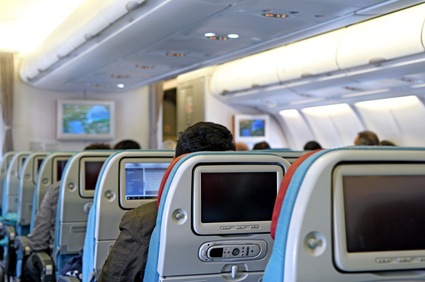Long-haul flights, which are flights longer than four hours, can increase your risk of developing deep vein thrombosis. However, you can take certain precautions to help prevent this from occurring.

What is deep vein thrombosis?
Deep vein thrombosis, or DVT, is a condition in which a blood clot forms inside one of the deep veins. This usually occurs in the lower legs but can also occur in the thigh or, more rarely, in other deep veins such as those in your arm or pelvis. If a clot forms in the superficial veins, which lie just under the skin, the condition is called superficial thrombophlebitis. These clots are less serious but occasionally spread to deep veins, becoming DVT.
Most clots are small and don’t produce any symptoms. Your body breaks them down gradually with no long-term ill effects. However, larger clots can block or partially block blood flow, causing pain, tenderness, swelling, a change in skin colour and mild fever. You might also find it difficult to stand on the affected leg.
Possible complications of DVT include pulmonary embolism, post thrombotic syndrome and limb ischaemia. These conditions can be life-threatening, so it’s important to be aware of the risks.
Who typically gets deep vein thrombosis?
Long-haul flights increase your risk of DVT because they involve sitting still for long periods. Comparatively low oxygen and air pressure levels in aircraft cabins are also thought to be a contributing factor.
In addition, you’re at greater risk of getting DVT if you
- are over 60
- smoke
- have less than average mobility
- have previously had a blood clot or have a family history of blood clots
- are overweight
- have a long-term health condition such as cancer, heart disease or kidney disease
- are a woman taking a contraception pill that contains oestrogen or HRT
- are pregnant or have recently had a baby
What you can do to prevent DVT on long flights
As for most medical conditions, prevention is better than cure. You can take several steps on long-distance flights to help prevent DVT:
• Exercise your legs – Walk as much as possible, for example up and down the aisle of the aeroplane. The muscles in your legs then naturally help to pump the blood around your veins, helping prevent clots from forming. If you can’t walk around, regularly bend and straighten your toes, ankles and legs. Another simple but effective exercise is to trace out the letters of the alphabet with your toes, one foot at a time.
• Drink lots of water – Staying well hydrated can help prevent clots from forming. Accordingly, you should avoid drinking alcohol or caffeine, and drink plenty of water instead.
• Wear loose-fitting clothing.
• Don’t take sleeping tablets – these are likely to make you fall asleep or become sleepy, reducing the extent to which you move around.
• Wear compression stockings fitted up to the knees, especially if you have any of the risk factors for DVT
If you’ve recently been treated for DVT, it’s advisable to avoid long-distance travel for at least two weeks.
